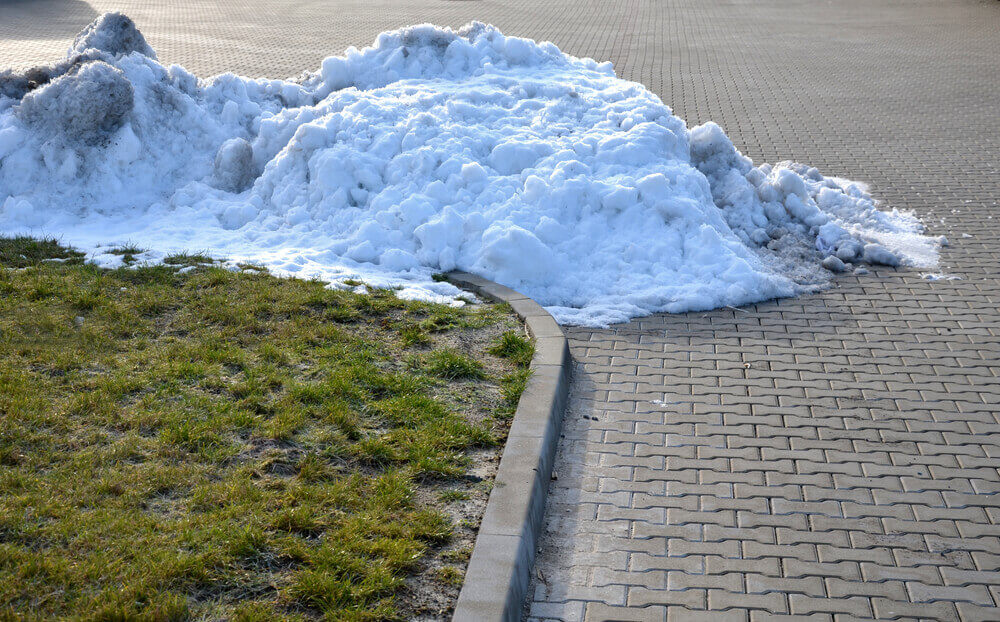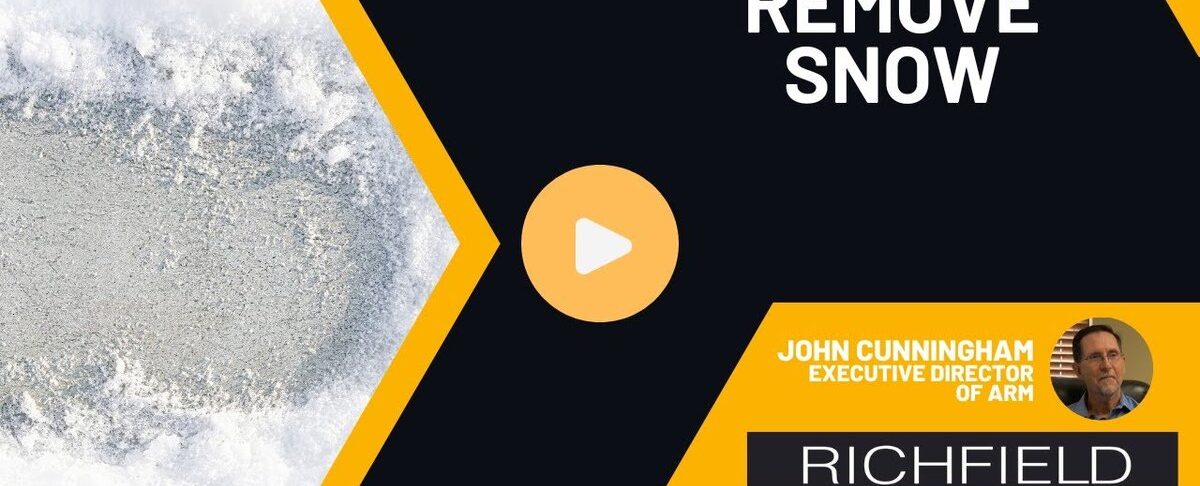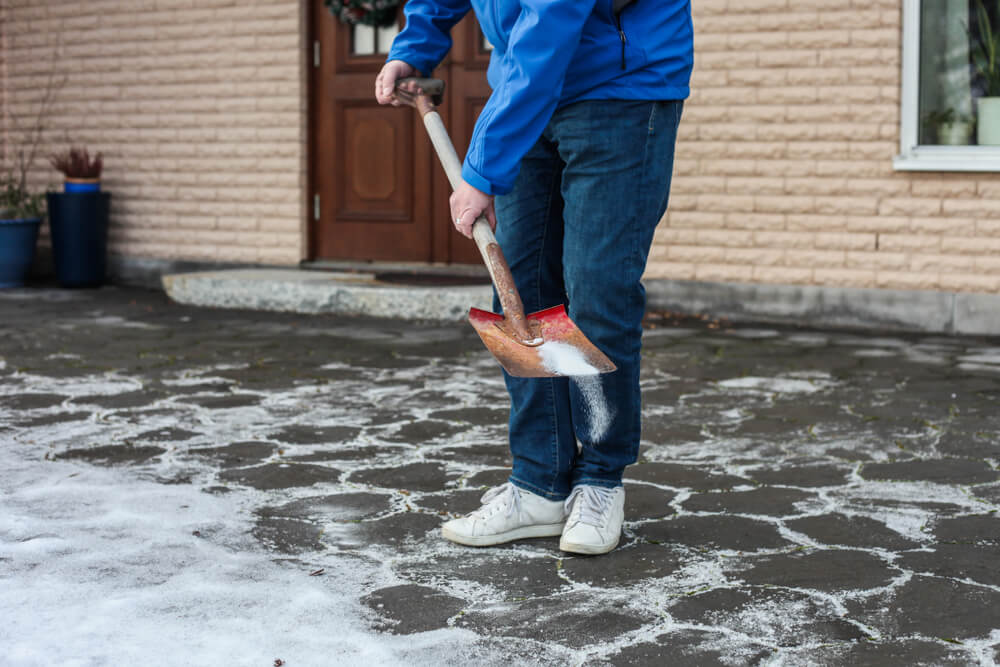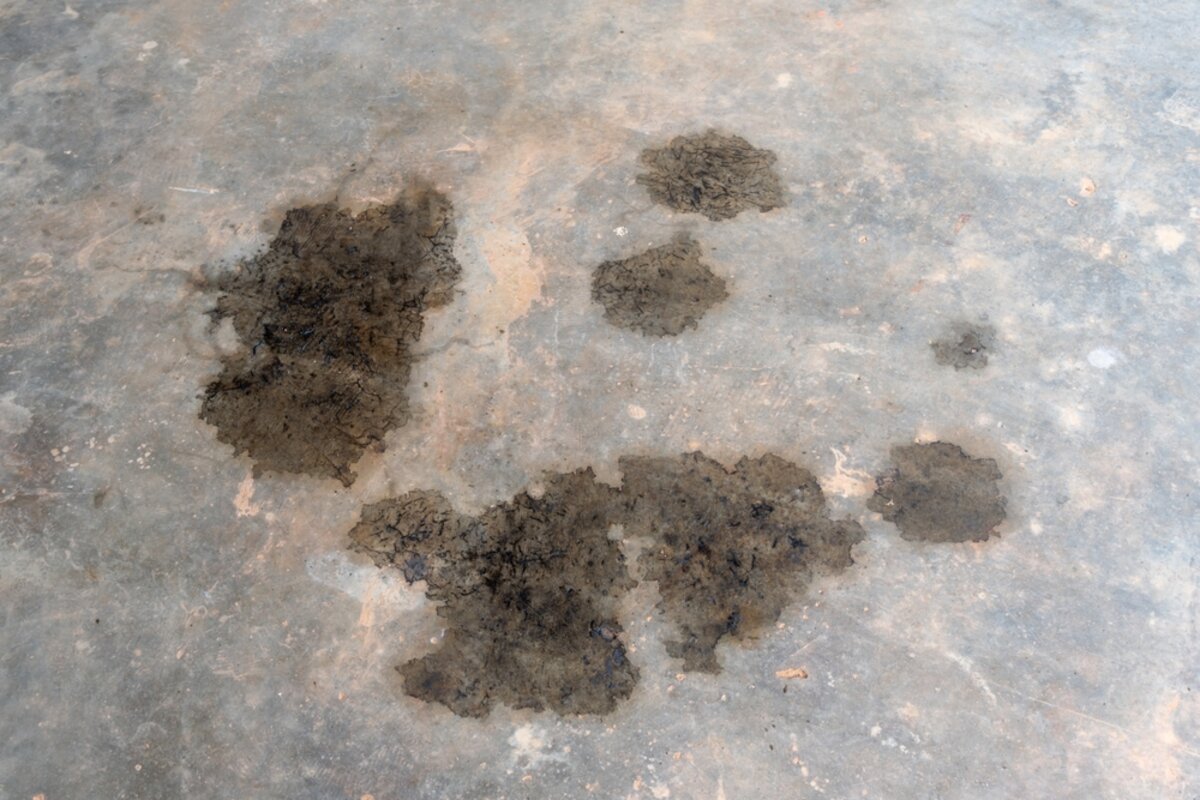As winter approaches, the maintenance of your concrete driveway, patio, or parking lot might be the last thing on your mind. While a blanket of snow might seem harmless, or even picturesque, leaving it on your concrete surfaces can have consequences.
In this article, we will explore why removing snow from concrete, especially during its first winter, is crucial to extending the life and integrity of your concrete surfaces.
Role of Snow as an Insulator
Many people are unaware that snow acts as an excellent insulator. It’s a common phenomenon observed in nature, where a layer of snow can actually help to moderate the temperature of the ground beneath it. When snow accumulates and doesn’t melt throughout the winter, the frost tends to penetrate less deeply into the ground. This happens because the snow is effectively insulating the surface underneath it. The same principle applies to concrete surfaces.
When snow is left in place on top of a concrete driveway, patio, or parking lot throughout the winter season, it serves as an insulator. Consequently, the part of the concrete underneath the snow remains at a more constant, albeit cold, temperature compared to exposed areas. While this might not seem problematic, issues arise when you have inconsistent snow removal.
Temperature Difference Issue
Varying Insulation Leads to Cracks
The trouble starts when a concrete surface has areas where snow has been removed and other areas where it has been left in place. This creates a temperature difference across the concrete slab. The areas under the snow remain insulated and relatively stable, while the cleared sections are exposed to fluctuating temperatures, leading to thermal expansion and contraction.
The Result: Structural Weaknesses
This inconsistency in temperature can be enough to cause cracking in the concrete. The different areas try to expand and contract at various rates, leading to structural weaknesses. This is particularly problematic for newly poured concrete experiencing its first winter, as it is more susceptible to such environmental stressors.
Best Practices for Snow Removal from Concrete
Remove Snow from the Entire Concrete Slab
If you decide to remove snow from a part of your concrete driveway, patio, or parking lot, it’s advisable to clear the entire surface. This promotes temperature uniformity across the concrete, reducing the risk of cracks.
Timing Matters: Address Snow in the First Winter
Newly laid concrete is particularly vulnerable during its first winter. The concrete is still curing and gaining strength, making it more susceptible to the risks associated with temperature fluctuations. Therefore, consistent snow removal during the first winter is especially important for the longevity of your concrete structures.
Conclusion

Ignoring the snow on your concrete surfaces during winter might seem like the easiest route, but it’s not the wisest one. Understanding that snow acts as an insulator helps to appreciate the risks involved in inconsistent snow removal. Particularly in its first winter, your concrete is at a higher risk of cracking due to temperature differences caused by partial snow clearance.
Adopting a consistent snow removal strategy not only preserves the structural integrity of your concrete but also prolongs its lifespan. Contact Richfield Concrete today to speak with one of our experts about removing snow from concrete during the first winter.









